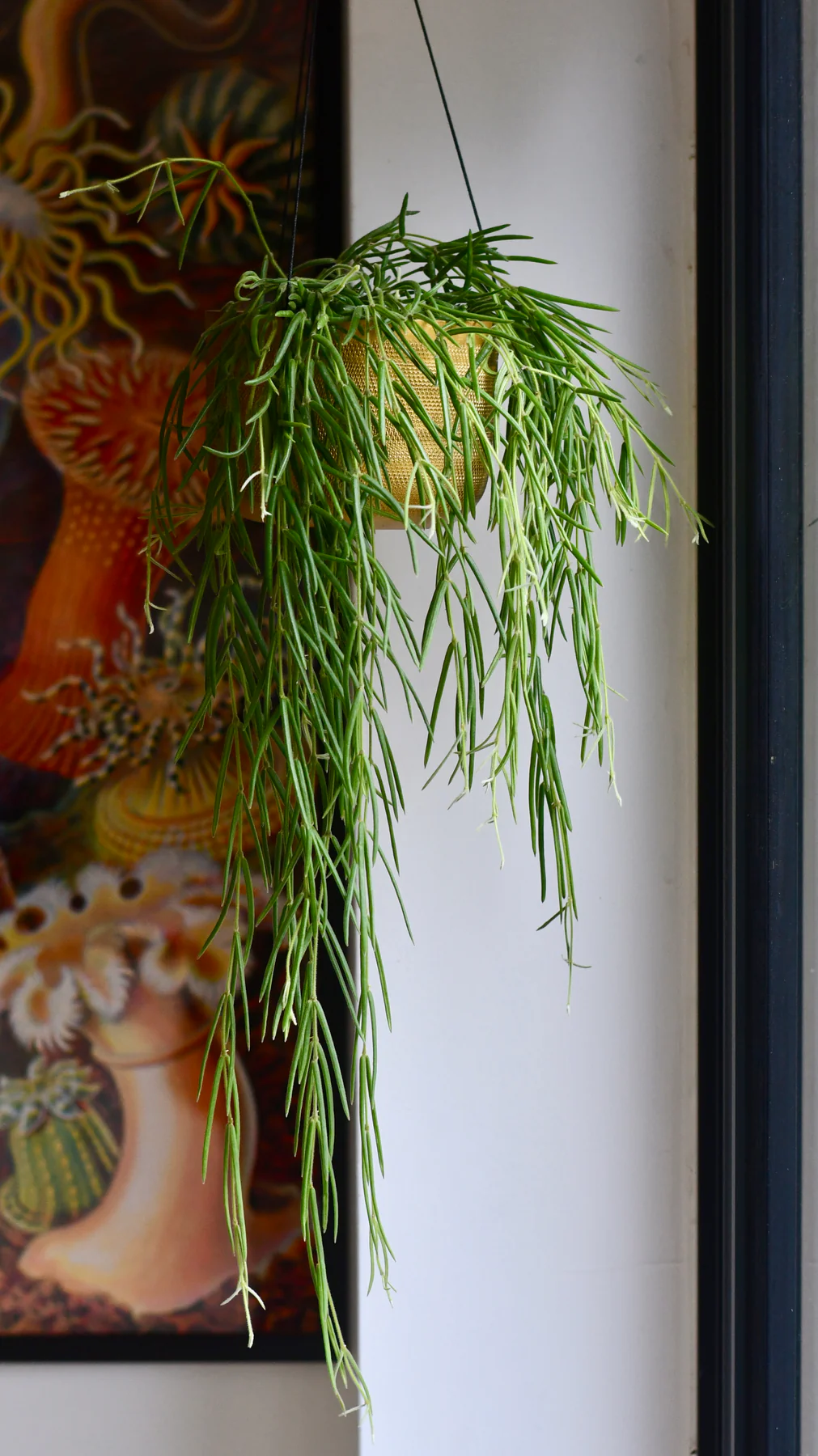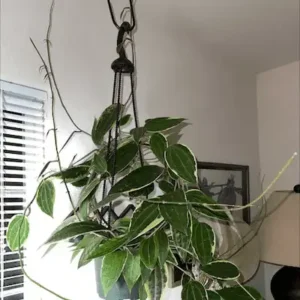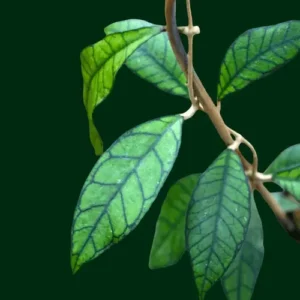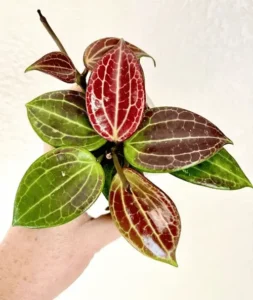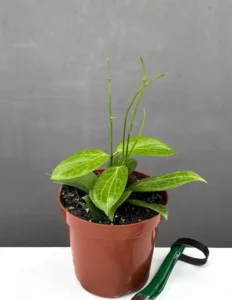If you’re searching for an easy-to-care-for houseplant that adds charm and beauty to your home, the hanging hoya plant’s facts could be the perfect match. These tropical plants, often called “wax plants” due to their thick, waxy leaves, are admired for their cascading growth habit and delicate, fragrant flowers. With over 200 species available, hoyas are versatile, low-maintenance, and perfect for indoor gardening.
In this comprehensive guide, we’ll explore the fascinating world of hoya (plant), offering valuable information on the most popular types, care tips, propagation techniques, and why they’ve become favorites in the plant community. Here are some Hanging Hoya Plant’s Facts.
What are Hoyas?
Hoyas are a genus of tropical plants native to Asia and Australia. They belong to the Apocynaceae family (the same family as milkweed and oleander) and are characterized by their vining or trailing growth, thick, succulent-like leaves, and clusters of star-shaped flowers. Their ability to adapt to various growing conditions and their distinctive, showy blooms make them a popular choice for hanging baskets.
Hoyas are epiphytic by nature, meaning they typically grow on trees or other plants rather than in the soil. Their thick leaves help retain water, allowing them to survive in dry environments.
Quick Facts
- Scientific Name: Hoya spp.
- Common Name: Wax plant, porcelain flower
- Family: Apocynaceae
- Native Region: Southeast Asia, Australia, and the Pacific Islands
- Growth Habit: Trailing or climbing vines
- Flowering Time: Spring and summer
- Toxicity: Non-toxic to pets and humans
Popular Species of Hoya for Hanging Baskets
There are over 200 species of hoya plants, but not all of them are suitable for indoor cultivation. Below are some of the most popular types of hoyas that thrive in hanging baskets.
1. Hoya Carnosa
One of the most common hoya species, Hoya carnosa is known for its waxy green leaves and clusters of fragrant, pink, or white flowers. This species can thrive with minimal attention, making it a favorite among beginner gardeners.
-Size
Up to 10 feet in length
-Light
Bright, indirect light
-Flowers
Star-shaped, pink or white with a red center
-Notable Varieties
‘Krimson Queen,’ ‘Krimson Princess’
2. Hoya Pubicalyx
Hoya pubicalyx is another species prized for its unique foliage and beautiful flowers. Its dark green leaves often have silver speckles, and the plant produces star-shaped flowers ranging from deep purple to pink.
Size
Up to 8 feet in length
Light
Bright, indirect light
Flowers
Purple, pink, or reddish clusters with a white center
Special Features
Some varieties develop a strong fragrance at night.
3. Hoya Kerrii
Known as the “Sweetheart Hoya,” this species is recognized by its heart-shaped leaves. Hoya kerrii is a slow-growing plant, but its charming appearance makes it popular as a romantic gift or decorative houseplant. It can be grown as a single-leaf plant or as a trailing vine.
Size
Up to 10 feet in length (as a vine)
Light
Bright, indirect light
Flowers
Star-shaped, creamy white with a pink center
Notable Variety
Variegated Hoya kerrii
4. Hoya Linearis
Hoya linearis is distinguished by its thin, narrow leaves and delicate appearance. This species thrives when grown in a hanging basket, with its vines cascading down in long, soft tendrils.
Size
Up to 4 feet in length
Light
Bright, indirect light
Flowers
Small, white, fragrant clusters
Watering Needs
Requires slightly more frequent watering compared to other hoyas.
Care Tips for Hanging Hoya plants
While hoyas are generally easy to care for, they do have specific needs to ensure healthy growth and flowering. Below are the essential factors to consider when growing hoya plants in hanging baskets. Here are some Hanging Hoya Plant’s Facts.
-Light Requirements
Hoyas thrive in bright, indirect light. Too much direct sunlight can scorch their leaves, while too little light may hinder their growth and reduce the likelihood of flowering. North-facing windows or east-facing windows are ideal locations for hoyas. If you notice your plant is becoming leggy or isn’t flowering, it may be a sign that it’s not getting enough light.
Optimal Conditions
6-8 hours of indirect sunlight daily.
Avoid
Direct midday sunlight.
-Watering Needs for hanging hoya plant
As epiphytic plants, hoyas are accustomed to drying out between waterings. Overwatering is one of the most common mistakes made with hoyas, leading to root rot. Ensure that the soil is well-draining and allow it to dry out between waterings. It is an effective Hanging Hoya Plant’s Facts.
Frequency
Water when the top 2 inches of soil are dry.
Humidity
Hoyas enjoy moderate humidity levels of around 40-60%. They can tolerate drier air, but higher humidity may encourage better growth and flowering.
Mist
Some species benefit from occasional misting, particularly in drier environments.
-Soil and Fertilization for hanging hoya plant
Hoyas prefer well-draining soil. A mixture designed for succulents or orchids, which includes perlite or bark, is an excellent choice. These soils prevent water from lingering around the roots, which can lead to root rot.
-Fertilization
Feed your hoya with a balanced, water-soluble fertilizer diluted to half strength during the growing season (spring and summer). Fertilize once every 4-6 weeks.
-pH Preference
Hoyas prefer slightly acidic to neutral soil with a pH of 6.0 to 7.0.
-Temperature for hanging hoya plant
Hoyas are tropical plants that enjoy warm temperatures. The ideal range is between 60°F (15°C) and 85°F (29°C). They are not frost-tolerant, so be sure to bring them indoors if temperatures drop below 50°F (10°C).
-Optimal Range
60-85°F (15-29°C)
-Avoid
Cold drafts or placing your hoya near heat sources like radiators.
-Pruning and Training
Hoyas benefit from occasional pruning to encourage bushier growth and prevent them from becoming too leggy. Pruning also helps the plant focus its energy on healthy leaves and flowers.
Pruning Tips
Trim the vines back in spring, just before the growing season begins. Remove dead or yellowing leaves.
Training Tips
If you want your hoya to grow upward rather than trail, you can provide a trellis or wire frame for it to climb. Alternatively, you can let the vines spill over the sides of a hanging basket for a dramatic effect.
Propagation of Hoyas
One of the most rewarding aspects of growing hoyas is their ease of propagation. You can propagate a new hoya from stem cuttings, which can be rooted in water or soil. Here are some Hanging Hoya Plant’s Facts.
-Stem Cutting Method
Step 1
Choose a healthy vine with at least two to three leaf nodes (the spots where leaves emerge from the stem).
Step 2
Use clean, sharp scissors or pruners to cut just below a node.
Step 3
Remove the leaves from the lower node.
Step 4
Place the cutting in water or moist soil. If using soil, cover the cutting with a plastic bag to retain moisture.
Step 5
Keep the cutting in bright, indirect light and maintain humidity. Roots should begin to form in 2-4 weeks.
-Air Layering Method
Air layering is a technique that allows you to propagate the plant without removing the stem from the parent plant. It’s ideal for larger hoya vines that may be too mature to root easily.
Step 1
Select a healthy stem with visible nodes.
Step 2
Use a sharp knife to make a shallow cut in the stem.
Step 3
Wrap the cut area with moist sphagnum moss and secure it with plastic wrap.
Step 4
Keep the moss moist, and within a few weeks, roots should develop from the wound.
Step 5
Once the roots are established, cut the stem just below the new root growth and plant it in the soil.
Fascinating Facts and Figures about Hoyas
Long Lifespan
Hoyas are known for their longevity, with some plants living for over 30 years! Proper care and repotting can help your hoya thrive for decades.
Fragrant Flowers
The flowers of hoyas are not only beautiful but also highly fragrant, especially at night. Some species, such as Hoya carnosa, emit a sweet, vanilla-like scent.
Flower Frequency
Hoyas don’t bloom as frequently as other houseplants. It may take a year or more for a newly planted hoya to flower, but the wait is well worth it. Once established, they bloom yearly in the spring and summer.
NASA-Approved
Hoyas are one of the few houseplants studied by NASA for their air-purifying properties. They help remove pollutants like benzene, formaldehyde, and toluene from the air, making them a great addition to indoor spaces.
Market Popularity
Hoya plants have seen a surge in popularity among plant enthusiasts in recent years. Prices for rare species, such as Hoya carnosa ‘Compacta,’ can range anywhere from $20 to over $200, depending on the size and rarity.
FAQs Can you hang a Hoya plant? Hoya plants are epiphytic plants, commonly known as houseplants and wax plants. These plants can be mounted or potted on a wooden metal. Do Hoyas prefer to climb or hang? Hoyas prefer to climb or hang. These wax plants are usually supported by a trellis for effective growth. Do Hoyas like sun or shade? Hoyas thrive in bright, indirect light. Too much direct sunlight can scorch their leaves, while too little light may hinder their growth and reduce the likelihood of flowering. |
Conclusion
Whether you’re a beginner or a seasoned plant enthusiast, hoyas offer an excellent combination of beauty and low-maintenance care. Their trailing vines and unique blooms make them ideal for hanging baskets, where they can truly shine. Not only are they easy to care for, but they also help purify the air, making them a great addition to any home.
With proper care, your hoya plant can grow and bloom for decades, filling your home with its lush, waxy leaves and fragrant, star-shaped flowers. Whether you’re propagating new plants or enjoying their air-purifying benefits, hoyas are an investment worth making for any plant lover.

